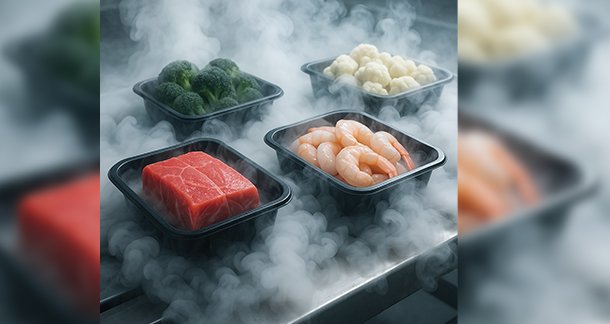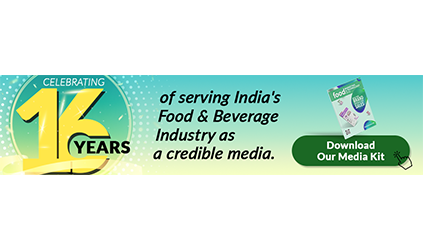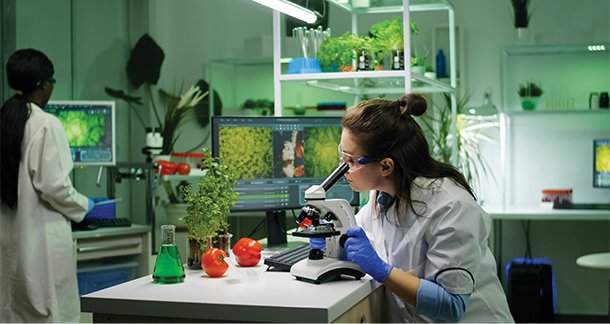Introduction
CO₂ is widely used in food processing, packaging, transportation, and storage for refrigeration and rapid freezing applications, available in gaseous, liquid, and solid (dry ice) forms. Since CO2 is stable and inert in all environments and safe for both plants and animals, it is a more environmentally friendly and dependable refrigerant than alternative options like ammonia and hydrofluorocarbons. CO2 is recoverable, affordable, inert, non-flammable, non-toxic, and its critical conditions are reasonably safe. The food business has found CO2 to be the perfect supercritical fluid because of its properties, which include a critical density of 0.460g/cm3, 31.06°C critical temperature (Tc), and 73.83 bar critical pressure (Pc). Heat-sensitive, volatile, and oxidizable components can be separated and extracted with the help of supercritical fluid extraction (SFE) technology, which uses CO2 to produce Flavours and essential oils. CO2 found its application (liquid/gaseous form) in carbonated and alcoholic beverages. CO2 also finds its application in refrigeration (gaseous state) and in freeze drying as dry ice (solid state) and liquid state. Grocery stores, labs, and the food processing industry frequently use dry ice as a chilling agent because it is a reasonably priced refrigerant.
Cryogenic Freezing using CO2 and as refrigerant
Over 5.1 atm of pressure causes liquid CO2 to develop, and the freezing liquid exhibits cryogenic qualities. Fruit drinks have a CO2 content of 1% (v/v), while sodas have a CO2 content of 6% (v/v). Regarding the purity and quality of beverage-grade CO2, the International Society of Beverage Technologists (ISBT) has highly stringent regulations. The CO2 needs to be extremely pure and odourless because any unwanted contaminants alter the beverage’s flavor. Food companies use liquid or solid CO2 extensively to keep supply chains cool while being transported and stored. During processing, CO2 is also utilized as a cryogenic medium to rapidly freeze and chill food items. Cryogenic freezing has several benefits over mechanical freezing, including lower costs, quicker cooling and freezing times, longer processed food shelf life, less loss from drip and dehydration, and higher-quality food in terms of texture, flavour, and appearance. Cryogenic freezing is a desirable alternative for the food processing sectors.
Solid CO2 has been used in refrigerated transportation (truck, trailer, and rail) more frequently Due to its extremely low temperature and direct evaporation as a gas, solid CO2 has a stronger cooling impact than ice formed from water. It is perfect for transporting frozen foods because of its low temperature. When it is applied to fresh foods, the CO2 gas in the air right next to the product lowers the air’s oxygen concentration, reducing the likelihood of oxidation-related degradation
Cold Pasteurization using CO2
By using CO2 molecules to influence bacteria and enzymes at pressures lower than 50 MPa, the cold pasteurization process preserves foods’ freshness in terms of their physical, nutritional, and sensory characteristics. Foods that are fatty and fluid can easily dissolve CO2 gas, and their solubility increases at low temperatures. Because of its higher solubility level in cold conditions, CO2 gas’s antibacterial activity is more noticeable.

Modified Atmospheric Packaging and CO2
MAP, a preservative with a high CO2 concentration, is mostly used for foods that are susceptible to microbial spoiling and are kept in a cold environment. By lowering physiological processes like respiration and ethylene synthesis, an ideal level of elevated CO2 concentration also aids in maintaining fresh produce. The effectiveness of a fresh-produce MAP system depends on maintaining an ideal O2 concentration and a suitable CO2 concentration in the package. One metric for assessing the safety and quality of packaged foods is CO2. In general, microbial or Mold development, which is accompanied by the metabolic generation of CO2, causes food to begin to degrade shortly after packaging. Packaging materials, food kind, storage conditions, and storage period all affect the environment that develops inside the package. Furthermore, CO2 inhibits the metabolism of microorganisms by acting as an active gas in protective atmosphere technology. Various concentration ranges are used based on the type of food, and detecting any leaks is essential to confirming the ideal shelf-life condition.
Application of CO2 in meat Industry
In the meat industry commercially CO2 gas is used to immobilize animals before they are killed. In a tunnel where CO2 gas is injected, animals are led or driven. The animal is taken straight to the slaughterhouse after falling unconscious onto a conveyor. Using this technique, CO2 raises the animal’s blood pressure, facilitating greater blood recovery and producing higher-quality meat. Also used CO2 for stunning pigs (Damiani et al., 2012). CO2 serves dual roles in food systems: preserving and processing foods, while also acting as a quality indicator during storage and handling.
About
Chandrika1, Mulukuri Naveena2, Dr. Dakshayani.R3 and Dr.R. Jagan Mohan4
1B. Tech Student, NIFTEM-T,
2 M. Tech Student, NIFTEM-T,
3 Senior Research Fellow, NIFTEM-T,
4Dean Student Welfare, NIFTEM-T



